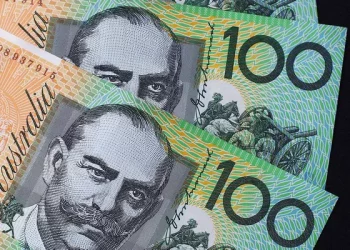Australia’s switch from the pound to the dollar in 1966 marked a pivotal moment in the nation’s financial and economic history. This transition was not merely about changing currency denominations; it was a comprehensive overhaul aimed at modernizing the country’s monetary system, streamlining economic operations, and asserting its financial independence on the global stage. In this article, we will delve into the historical, economic, and strategic factors that led to this significant currency reform, exploring its implications for Australia’s economy and its role in the global foreign exchange market.
Historical Context: The British Influence
For much of its early history, Australia was closely tied to the British Empire, and this connection extended deeply into its financial systems. The Australian pound, introduced in 1910, was based on the British pound sterling and adhered to a monetary system that mirrored the UK. This peg to the British pound reflected Australia’s colonial heritage and its reliance on Britain as its primary trading partner and source of investment.
However, as the 20th century progressed, Australia began to develop a more distinct economic identity. The shifting dynamics of global trade and politics after World War II significantly altered Australia’s relationship with Britain. The rise of the United States as an economic superpower and the increasing importance of Asia as a trading region further underscored the need for Australia to adapt its monetary system to better align with these new realities.
The Challenges of the Pre-Decimal System
Before 1966, Australia used the pounds, shillings, and pence system inherited from Britain. While this system was familiar, it posed several challenges in an era of increasing economic complexity:
Cumbersome Calculations: The non-decimal structure of the pound (1 pound = 20 shillings, 1 shilling = 12 pence) made everyday calculations unnecessarily complicated, particularly in commerce, accounting, and taxation. Decimal systems were far easier to manage, especially with the advent of modern computing technologies.
Global Trends Toward Decimalization: Many countries had already adopted decimal currency systems or were in the process of transitioning. The United States, for instance, had introduced its dollar system in the 18th century, setting a precedent for economic efficiency and simplicity.
Economic Divergence from Britain: Australia’s economic ties were increasingly shifting away from Britain towards other nations, particularly the United States and Japan. A currency system that symbolized colonial ties no longer reflected Australia’s growing independence and evolving global relationships.
The Decision to Decimalize
The move toward decimalization began in earnest in the 1950s, driven by both practical considerations and political will. Several factors contributed to the momentum:
Efficiency in Trade and Accounting: The decimal system’s simplicity offered clear advantages for international trade, where calculations and conversions needed to be swift and precise. Adopting a decimal currency would streamline Australia’s trade operations, particularly with countries that already used such systems.
Modernizing the Economy: By the mid-20th century, Australia was undergoing significant economic and technological transformation. Adopting a modern currency system was seen as an essential step in aligning the country with global financial standards.
National Identity and Autonomy: While the change was largely practical, it also carried symbolic weight. Transitioning to a new currency system allowed Australia to assert a greater sense of national identity, distinct from its colonial past.
In 1963, the Australian government officially announced its decision to adopt a decimal currency system, and plans for the transition were set in motion.
Why the Dollar?
The choice of the dollar as the new currency unit was deliberate and symbolic. Several alternatives, including retaining the term “pound” or adopting uniquely Australian names like “royal,” were considered. Ultimately, the dollar was chosen for its simplicity and international recognition. The name was also practical; it aligned Australia with the United States, whose dollar had become a dominant global currency, and reflected a forward-looking economic outlook.
Implementation: The Transition to Dollars and Cents
On February 14, 1966, Australia officially transitioned from pounds, shillings, and pence to the Australian dollar, divided into 100 cents. The process of decimalization required meticulous planning and execution:
Public Awareness Campaigns: To ensure a smooth transition, the government launched a comprehensive public education campaign. Advertisements, instructional booklets, and even a song titled “Decimal Currency” helped familiarize Australians with the new system.
Redesigning Banknotes and Coins: A new set of banknotes and coins was introduced, featuring uniquely Australian designs that celebrated the country’s culture and heritage. This reinforced the sense of national pride associated with the change.
Adjusting Financial Systems: Banks, businesses, and government institutions undertook extensive preparations to recalibrate their accounting systems and processes for the new currency. This involved updating bookkeeping practices, cash registers, and pricing systems.
The transition was completed smoothly, thanks to these coordinated efforts, and the Australian dollar quickly became a symbol of the country’s modern economic identity.
Economic and Forex Implications
Enhancing International Competitiveness
The introduction of the Australian dollar enhanced the country’s competitiveness in international markets. With a simpler and more universally understood currency system, Australia was better positioned to engage in trade and attract foreign investment. The shift also aligned Australia more closely with its primary trading partners in the Asia-Pacific region.
Floating the Australian Dollar
In 1983, the Australian government took another major step by floating the Australian dollar. This decision allowed the currency’s value to be determined by market forces rather than being pegged to another currency or gold. The float significantly increased Australia’s flexibility in responding to global economic shifts and reinforced its integration into the global foreign exchange market.
Strengthening the Australian Dollar as a Global Currency
Today, the Australian dollar is one of the most traded currencies in the world. Its stability, supported by Australia’s strong natural resource exports and sound economic policies, makes it a preferred currency for investors seeking exposure to the Asia-Pacific region. The transition from the pound to the dollar laid the foundation for this success, establishing a modern, robust, and globally competitive monetary system.
Cultural and Symbolic Impact
Beyond its economic implications, the adoption of the Australian dollar was a statement of national maturity and independence. The new currency designs celebrated Australia’s unique flora, fauna, and cultural icons, fostering a sense of national pride. The transition also symbolized a break from colonial ties and an embrace of Australia’s future as a confident and independent nation.
Conclusion
Australia’s switch from the pound to the dollar was a transformative moment that reshaped the country’s financial landscape. Driven by the need for efficiency, modernization, and national identity, the transition to a decimal currency system was a forward-thinking decision that aligned Australia with global economic standards and enhanced its competitiveness. Today, the Australian dollar stands as a testament to the foresight of the policymakers who recognized the importance of this change.
By adopting the dollar, Australia not only simplified its monetary system but also positioned itself as a key player in the global financial markets, ready to embrace the challenges and opportunities of a rapidly evolving world. The decision continues to resonate, reflecting the country’s adaptability and ambition in shaping its economic destiny.
Related Topics:

























